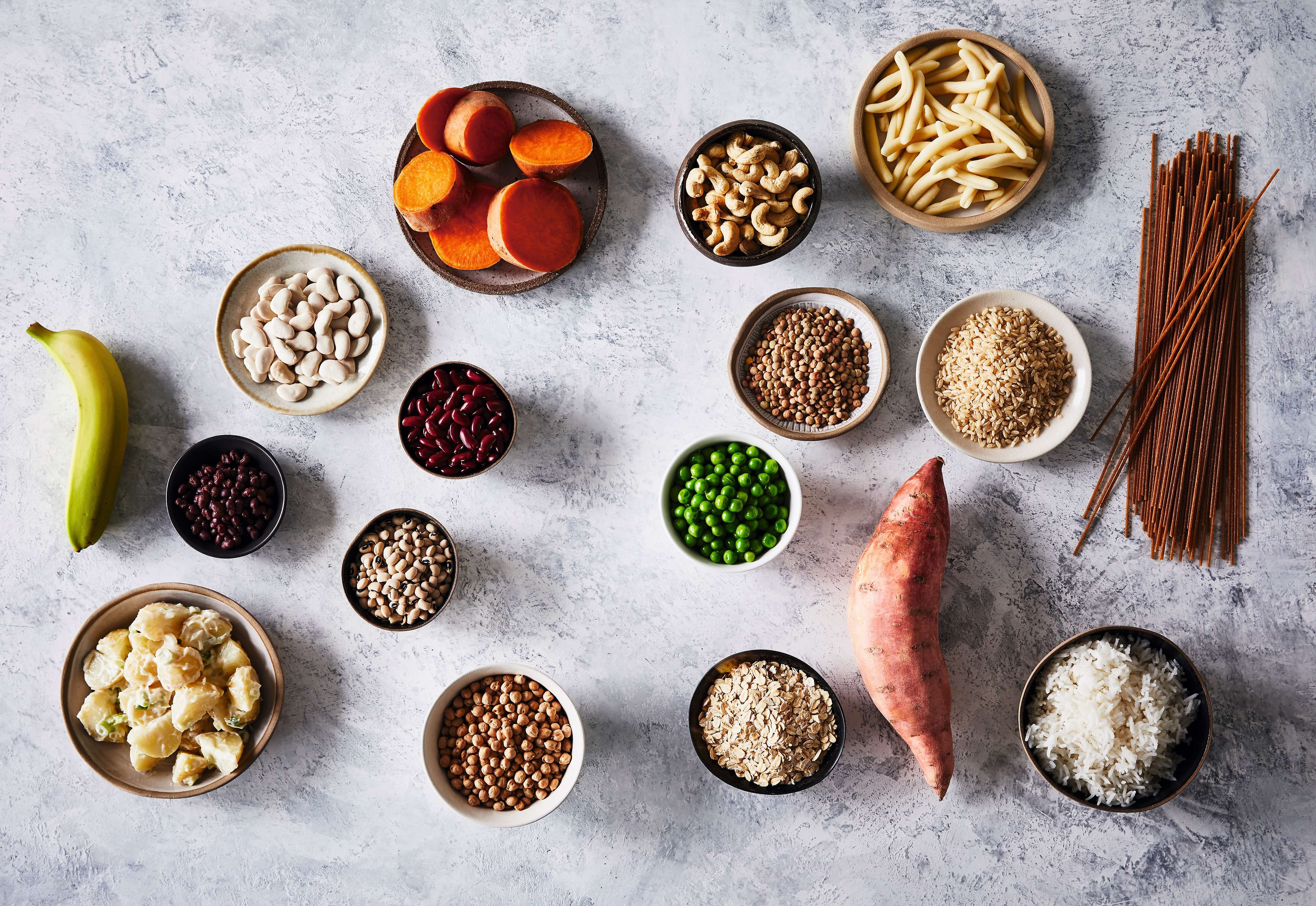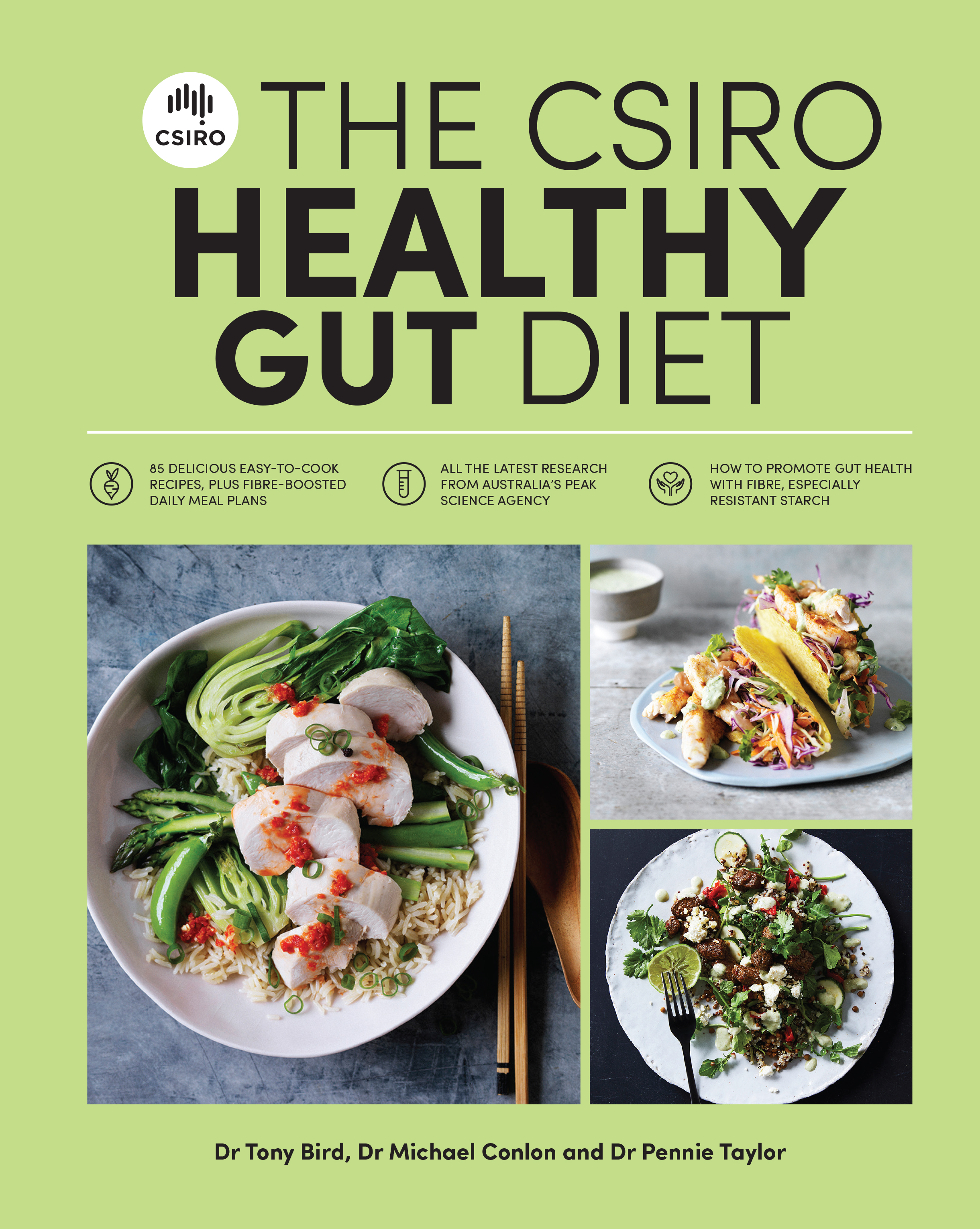Understanding resistant starch and its role in gut health

Firstly, what is resistant starch?
Resistant starch is dietary starch that 'resists' digestion in the small intestine.
Whereas most starch we eat is quickly and extensively digested in the upper gut, a fraction survives, passing through to the large bowel.
In the large bowel, resistant starch then provides fuel for the resident bacteria (microbiome), which break it down (ferment) to products that help support a healthy digestive system and protect against gut and other diseases.
Why is resistant starch important?
Resistant starch is important for supporting a healthy gut microbiome.
Starch escaping the small bowel acts as a source of food for the 'good bacteria' in the large bowel, fuelling their growth and activity, leading to favourable changes within the large bowel.
Resistant starch fermentation favours the production of butyrate, a major bacterial metabolite fundamental for keeping the gut healthy and functioning normally.
Butyrate is the preferred fuel for cells lining the gut and ensuring the integrity of the gut wall, helping to protect it against cancer and other serious digestive diseases.
Resistant starch also offers health benefits beyond those in the gut, such as helping to reduce your risk of type 2 diabetes by increasing the body’s sensitivity to insulin.
The importance of fibre diversity

Resistant starch is a component of dietary fibre, and current research is highlighting the importance of dietary fibre diversity.
Because fibres work in different ways and so don't all have the same health benefits, they are often more effective in combination than individually for maintaining a healthy gut.
Australians eat more fibre than many other western countries (though our intakes of fibre are still below the recommended level), but bowel cancer remains our second most common cancer in both men and women.
This is a paradox, because nutritionists agree that fibre may help to prevent bowel cancer (and many other gut ailments).
This means that Australians may need to eat a wider variety of fibres, especially fermentable fibres such as resistant starch. Our research shows that eating resistant starch leads to positive changes in the bowel and could guard against the genetic damage that precedes bowel cancer.
We hope that eating a wider variety of fibre, including resistant starch, will help us to improve gut health and assist in reducing the incidence of bowel cancer and other lifestyle-related diseases.
It is always advised you seek your own doctor’s advice for any concerns you may have about your own health and diet-related disease risk.
How much resistant starch do Australians eat?
Accurate estimates of resistant starch consumption at the population level aren’t currently available, because food databases for resistant starch are limited and unreliable.
The resistant content of a given food also varies depending on its manufacture and culinary preparation, among other factors.
Our research indicates that many everyday foods are low in resistant starch, that Australian adults on average eat only about 3 to 9 grams each day, and adult men consume more resistant starch than women.
The low content of resistant starch and other dietary fibres in modern processed foods, and the resultant scarcity of starch reaching the colon, may contribute to the prevalence of bowel cancer and other diet-related chronic diseases.
How much resistant starch should we be eating?
Intakes of resistant starch of 15-20 grams per day are recommended for supporting bowel health. This is almost four times greater than a typical Australian diet currently provides.
As the suggested intakes for resistant starch are significantly higher than estimated current levels, there is considerable scope to increase resistant starch consumption across the population.
Which foods are high in resistant starch?
All starchy foods contain resistant starch. It occurs naturally in cereal foods, such as breads and pasta, and legumes such as lentils, chickpeas, red kidney beans and baked beans, nuts and some seeds, starchy vegetables, and firm bananas.
The best sources are wholegrain cereals and legumes.
The amount of resistant starch varies greatly depending on how food is manufactured, prepared and cooked – as well as if it’s reheated.
Generally, processing and heating starchy foods depletes their resistant starch content; the more severe the conditions, the lower the resistant starch.
But resistant starch also can be formed when cooked foods are cooled. Repeated cooking and cooling produces a modest rise in resistant starch levels of foods such as cold cooked rice, pasta and potatoes.
A wholegrain developed by the CSIRO

Most starchy foods contain only small amounts of resistant starch. To help consumers boost their intake of resistant starch and other types of fibre, without markedly altering their eating habits, our researchers have developed new lines of cereal grains, such as BARLEYmax™ and high amylose wheat.
Working with food manufacturers, we have helped create a range of staple food products containing these new cereals, including breakfast cereals, wraps, bread, and cereal bars, that have elevated levels of resistant starch.
The CSIRO Healthy Gut Diet book
Keeping your gut healthy has become key to a healthier lifestyle, and the CSIRO Healthy Gut Diet book is a practical, easy-to-follow guide to help you achieve exactly that.
The CSIRO Healthy Gut Diet book includes 85 easy and delicious meal and snack recipes, daily meal plans developed to boost your fibre and resistant starch intake and more.
The CSIRO Healthy Gut Diet book
Find out more about the CSIRO Healthy Gut Diet book at the link below.
Understanding resistant starch and its role in gut health
Firstly, what is resistant starch?
Resistant starch is dietary starch that 'resists' digestion in the small intestine.
Whereas most starch we eat is quickly and extensively digested in the upper gut, a fraction survives, passing through to the large bowel.
In the large bowel, resistant starch then provides fuel for the resident bacteria (microbiome), which break it down (ferment) to products that help support a healthy digestive system and protect against gut and other diseases.
Why is resistant starch important?
Resistant starch is important for supporting a healthy gut microbiome.
Starch escaping the small bowel acts as a source of food for the 'good bacteria' in the large bowel, fuelling their growth and activity, leading to favourable changes within the large bowel.
Resistant starch fermentation favours the production of butyrate, a major bacterial metabolite fundamental for keeping the gut healthy and functioning normally.
Butyrate is the preferred fuel for cells lining the gut and ensuring the integrity of the gut wall, helping to protect it against cancer and other serious digestive diseases.
Resistant starch also offers health benefits beyond those in the gut, such as helping to reduce your risk of type 2 diabetes by increasing the body’s sensitivity to insulin.
The importance of fibre diversity
Resistant starch is a component of dietary fibre, and current research is highlighting the importance of dietary fibre diversity.
Because fibres work in different ways and so don't all have the same health benefits, they are often more effective in combination than individually for maintaining a healthy gut.
Australians eat more fibre than many other western countries (though our intakes of fibre are still below the recommended level), but bowel cancer remains our second most common cancer in both men and women.
This is a paradox, because nutritionists agree that fibre may help to prevent bowel cancer (and many other gut ailments).
This means that Australians may need to eat a wider variety of fibres, especially fermentable fibres such as resistant starch. Our research shows that eating resistant starch leads to positive changes in the bowel and could guard against the genetic damage that precedes bowel cancer.
We hope that eating a wider variety of fibre, including resistant starch, will help us to improve gut health and assist in reducing the incidence of bowel cancer and other lifestyle-related diseases.
It is always advised you seek your own doctor’s advice for any concerns you may have about your own health and diet-related disease risk.
How much resistant starch do Australians eat?
Accurate estimates of resistant starch consumption at the population level aren’t currently available, because food databases for resistant starch are limited and unreliable.
The resistant content of a given food also varies depending on its manufacture and culinary preparation, among other factors.
Our research indicates that many everyday foods are low in resistant starch, that Australian adults on average eat only about 3 to 9 grams each day, and adult men consume more resistant starch than women.
The low content of resistant starch and other dietary fibres in modern processed foods, and the resultant scarcity of starch reaching the colon, may contribute to the prevalence of bowel cancer and other diet-related chronic diseases.
How much resistant starch should we be eating?
Intakes of resistant starch of 15-20 grams per day are recommended for supporting bowel health. This is almost four times greater than a typical Australian diet currently provides.
As the suggested intakes for resistant starch are significantly higher than estimated current levels, there is considerable scope to increase resistant starch consumption across the population.
Which foods are high in resistant starch?
All starchy foods contain resistant starch. It occurs naturally in cereal foods, such as breads and pasta, and legumes such as lentils, chickpeas, red kidney beans and baked beans, nuts and some seeds, starchy vegetables, and firm bananas.
The best sources are wholegrain cereals and legumes.
The amount of resistant starch varies greatly depending on how food is manufactured, prepared and cooked – as well as if it’s reheated.
Generally, processing and heating starchy foods depletes their resistant starch content; the more severe the conditions, the lower the resistant starch.
But resistant starch also can be formed when cooked foods are cooled. Repeated cooking and cooling produces a modest rise in resistant starch levels of foods such as cold cooked rice, pasta and potatoes.
A wholegrain developed by the CSIRO
Most starchy foods contain only small amounts of resistant starch. To help consumers boost their intake of resistant starch and other types of fibre, without markedly altering their eating habits, our researchers have developed new lines of cereal grains, such as BARLEYmax™ and high amylose wheat.
Working with food manufacturers, we have helped create a range of staple food products containing these new cereals, including breakfast cereals, wraps, bread, and cereal bars, that have elevated levels of resistant starch.
The CSIRO Healthy Gut Diet book
Keeping your gut healthy has become key to a healthier lifestyle, and the CSIRO Healthy Gut Diet book is a practical, easy-to-follow guide to help you achieve exactly that.
The CSIRO Healthy Gut Diet book includes 85 easy and delicious meal and snack recipes, daily meal plans developed to boost your fibre and resistant starch intake and more.
The CSIRO Healthy Gut Diet book
Find out more about the CSIRO Healthy Gut Diet book at the link below.
